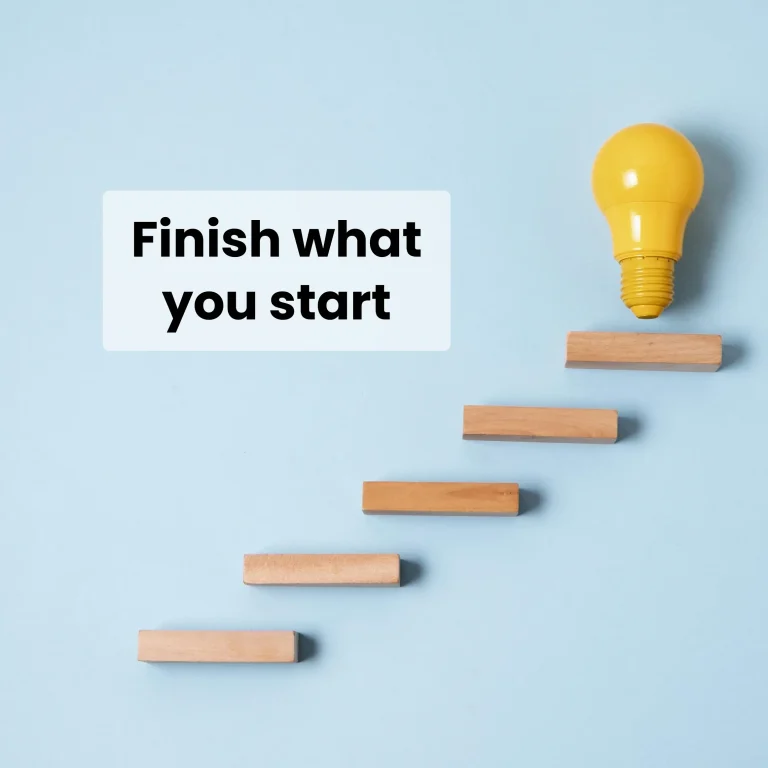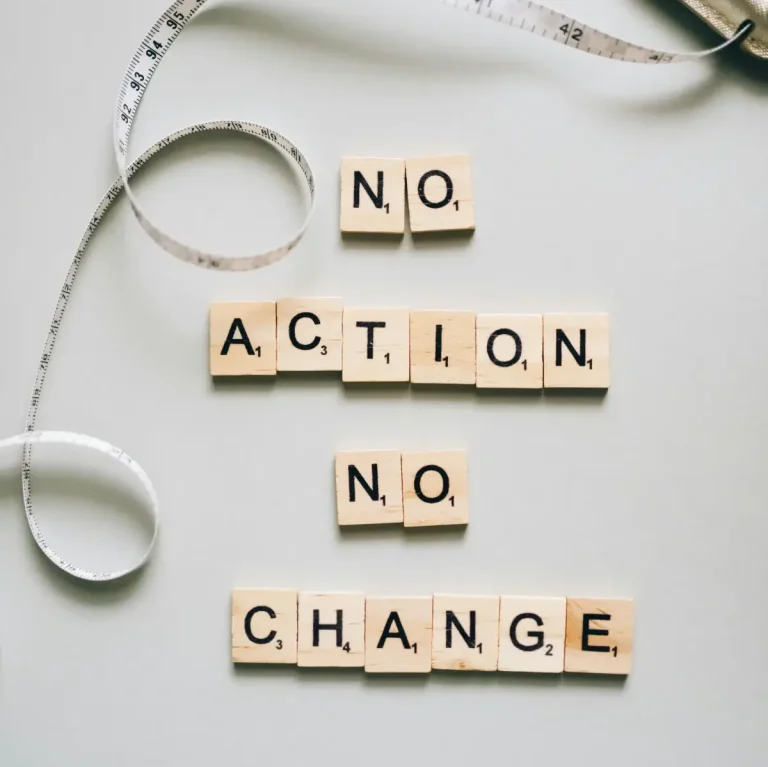“You don’t rise to the level of your goals, you fall to the level of your systems.” — James Clear
We’ve all experienced the frustration of setting goals with enthusiasm, only to watch them fizzle out. But here’s the truth: Goal setting for personal development differs from your career or academic goals. When personal development goals fail, it’s rarely about willpower—it’s about using the wrong approach.
This isn’t just about checking boxes—it’s about becoming the best version of yourself. Unlike generic productivity advice, these strategies are designed for deep personal transformation, whether you want to build confidence, improve relationships, or cultivate lifelong habits. Every tip ties back to self-awareness, emotional growth, and sustainable change.
Why Personal Development Goals Require a Different Approach
Personal development goals differ fundamentally from generic objectives like “increase sales” or “lose 10 pounds.” They target who you become, not just what you achieve.
| Personal Development Goals | Generic Goals |
| Focus on identity shift (“Become a confident public speaker”) | Focus on outcomes (“Give 10 presentations”) |
| Measure internal growth (self-awareness, emotional resilience) | Measure external metrics (revenue, weight loss) |
| Require sustainable systems (habits, mindset work) | Often rely on willpower alone |
The problem? Traditional goal-setting methods fail when applied to personal growth because they ignore:
- The emotional connection needed for lasting change
- The identity shift required to sustain new behaviors
- The non-linear nature of personal transformation
Let’s fix that.
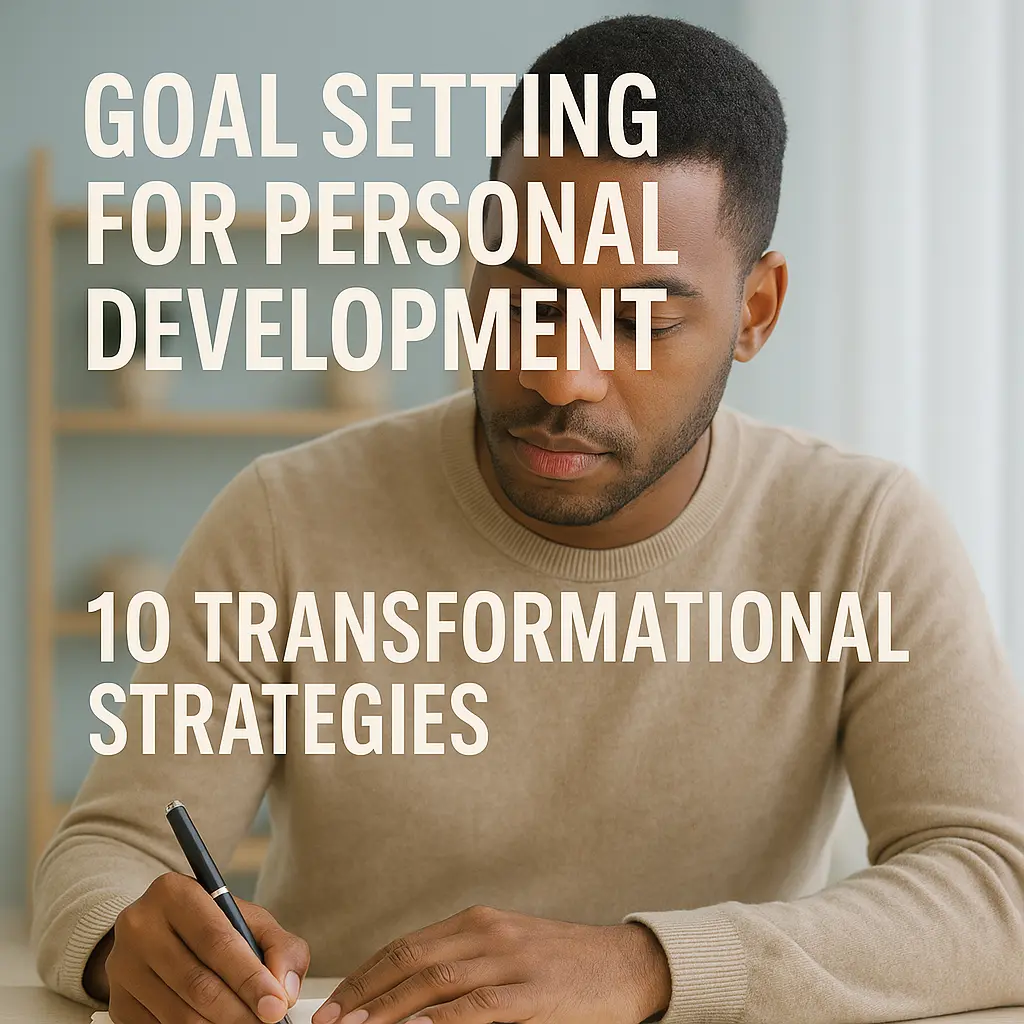
10 Transformational Goal-Setting Strategies for Personal Development
Table of Contents
1. Start With Identity-Based Goals (Not Just Outcomes)
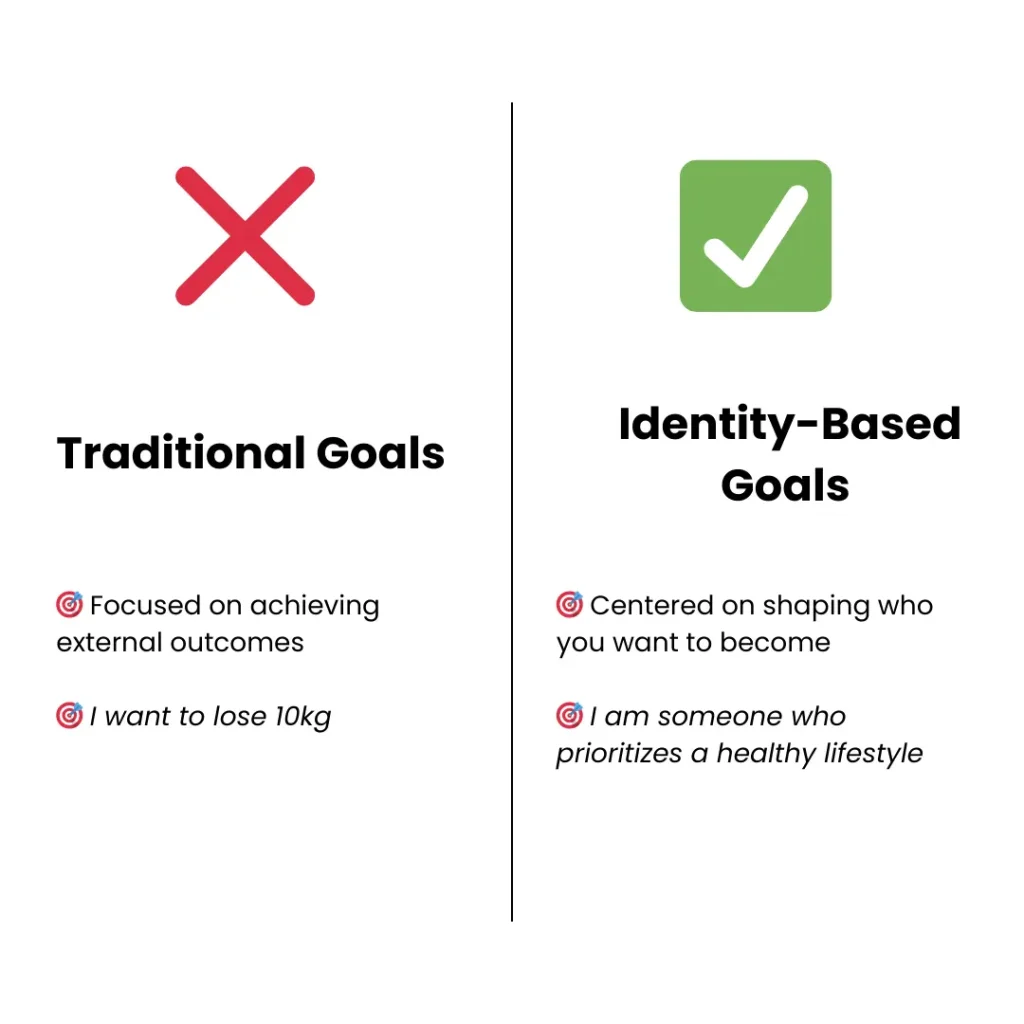
Personal development begins with who you become, not just what you achieve. Traditional goals focus on external results, but lasting change requires aligning actions with your desired identity. Ask yourself: “Who do I need to be to make this happen?”
Most goal setting for personal development fails because we focus on the wrong target. Instead of obsessing over what you want to achieve, this strategy shifts your focus to who you want to become. When your goals align with your self-image, action feels natural—not forced.
Goal setting:
- Traditional Goal: “Lose 20 pounds”
- Identity-Based Goal: “Become someone who prioritizes health effortlessly.”
How to Implement:
- Ask: “Who do I need to be to achieve this?”
- List 3-5 small actions that identity would take (e.g., “A healthy person meal preps Sundays”).
- Track identity evidence: “Today, I acted like someone who values health by…”
Science Backing: A Journal of Personality and Social Psychology study found identity-linked goals have 3x higher adherence rates.
2. Use the SMARTER Framework (With Emotional Anchors)
Goals stick when they’re emotionally compelling. SMARTER builds on SMART by adding Excitement and Reward, which are critical for personal growth.
Complete Example:
- Specific: “Have a 15-minute conversation in Spanish”
- Measurable: “Track practice time with a habit app”
- Achievable: “Start with 10 minutes daily”
- Relevant: “For my trip to Mexico”
- Time-bound: “By June 1st”
- Exciting: “Imagine ordering food confidently at a local market!”
- Rewarding: “Celebrate with a special dinner at my favorite Mexican restaurant.”
3. Micro-Habits That Rewire Your Self-Image (The 2-Minute Rule)
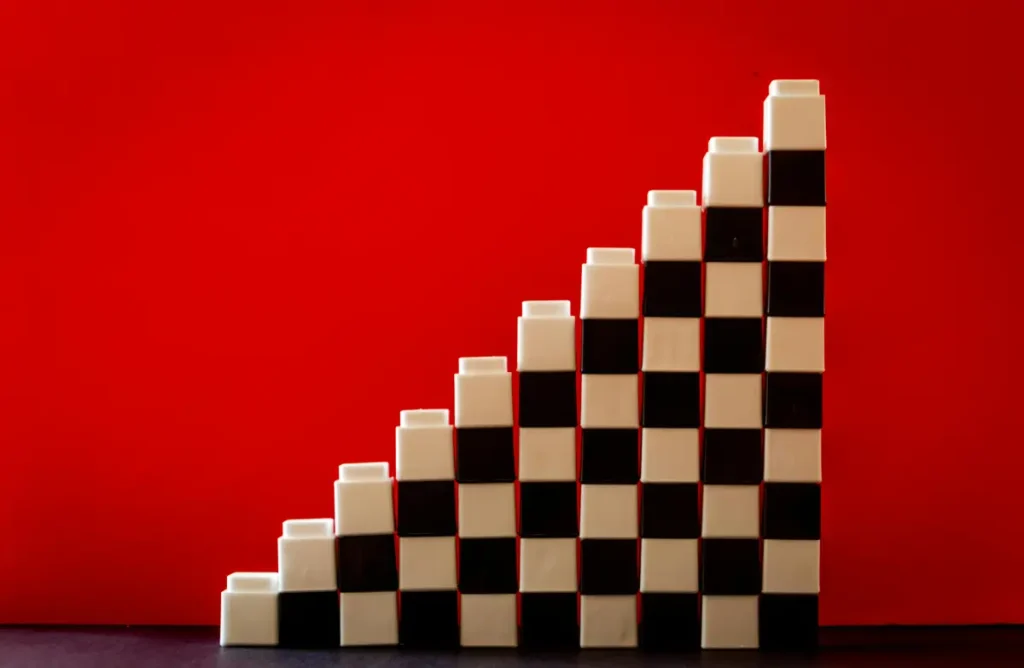
Ever notice how the hardest part of any goal is just getting started? That’s where micro-habits come in. By shrinking actions to absurdly small steps (think: “one push-up” or “one sentence written”), you bypass resistance and build unstoppable momentum for personal success. Big changes start with tiny steps. Micro-habits rewire your self-image by proving “I’m the kind of person who does this.”
Tiny actions > grand resolutions.
For Confidence:
- “Stand in a power pose for 30 seconds each morning.”
For Mindfulness:
- “Pause and name one emotion before meals.”
Psychology Insight: Research shows small wins build self-efficacy faster than big leaps.
4. Leverage Visualization for Identity Reinforcement
Here’s a cool fact: Your brain can’t tell vivid imagination from reality. Athletes use this to their advantage, and you can too. Spending just 2 minutes daily picturing yourself as the person who’s already achieved your goal rewires your subconscious for goal achievement.
Not just “see it”—embody it.
Exercise:
- Close your eyes.
- Picture your future self who’s achieved this goal.
- Notice their posture, voice, and choices.
- Ask: “What’s one thing they’d do today?”
Pro Tip: Add olfactory cues (e.g., smell coffee while visualizing your “writer self”).
5. Apply the 80/20 Rule to Personal Growth
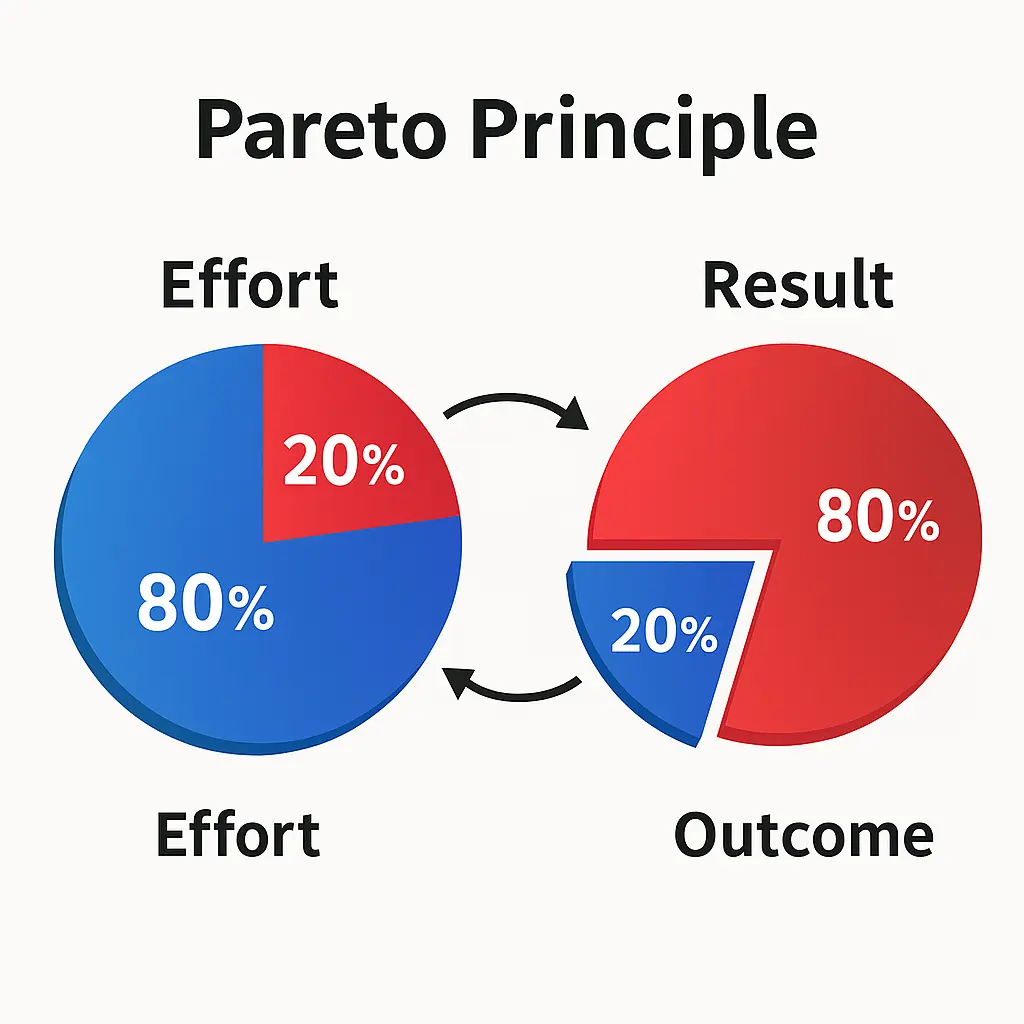
In goal setting for personal growth, not all efforts are created equal. This strategy helps you spot the 20% of actions that drive 80% of results—so you can stop wasting time on what doesn’t move the needle. (Spoiler: It’s usually simpler than you think.)
Examples:
- For Communication Skills: 20% = Active listening (not vocabulary drills)
- For Emotional Resilience: 20% = Morning gratitude practice (not therapy marathons)
Tool: Use the “Not-To-Do List”—cut activities that don’t align with your growth.
6. Track Internal Metrics (The Forgotten Growth Data)
Traditional goals measure things like pounds lost or dollars earned. But personal development thrives when you track invisible wins: How often did you speak up? Were you kinder to yourself? These qualitative shifts create lasting change.
Measure who you’re becoming, not just what you’re doing.
Track:
✅ “How often did I set boundaries this week?”
✅ “Did my self-talk improve?”
✅ “How present was I in conversations?”
Journal Prompt: “What’s one way I grew as a person today?”
7. Accountability That Nurtures (Not Punishes)

Accountability gets a bad rap when it feels like being monitored by a drill sergeant. The version that works for personal success focuses on curiosity, not shame. Try asking: “What’s one way I grew this week?” instead of “Did I fail?”
Ditch shame-based check-ins. Try:
Growth Partnerships:
- Weekly shares: “What did you learn about yourself?”
- “How did you honor your values?”
Example: Two friends working on patience text “Today, I paused before reacting when…”
A small pitch: Get an online accountability partner
8. Design Your Environment for Transformation
Your willpower is like a phone battery—it drains fast. But your environment works 24/7. Small tweaks (like leaving a book on your pillow or hiding the cookie jar) make goal achievement automatic by removing the need for constant self-control.
Your spaces shape your self-concept.
To Become a Reader:
- Place books in every room
- Delete social media apps
To Become Fit:
- Lay out workout clothes nightly
- Keep a yoga mat by your desk
Research: Environment beats motivation 3:1 (American Journal of Health Promotion).
9. Reframe Setbacks as Growth Opportunities

In goal setting for personal development, setbacks aren’t failures—they’re GPS recalculations. This mindset shift helps you ask, “What’s this teaching me?” rather than “Why can’t I stick to anything?” (Hint: The answer is usually enlightening.)
Script:
“This setback shows where I need to grow. My next step is…”
Example:
“I yelled at my kids today → I need to practice stress-management tools.”
10. Quarterly Identity Reviews
Who you are today isn’t who you were last year. These check-ins ensure your goals evolve with you. Ask: “Does this still align with who I’m becoming?” Sometimes the most powerful personal growth comes from letting go of outdated goals.
Every 3 months, ask:
- “Is this goal still aligned with who I want to become?”
- “What evidence shows I’m growing?” (Journal entries, feedback)
- “What needs to change?”
Template:
- Old Identity: “I’m someone who avoids hard conversations.”
- New Evidence: “This quarter, I spoke up 3 times at work.”
Implementing Your Personal Development Plan
Step 1: Choose 1-2 strategies to focus on for 30 days
Step 2: Create an identity-based goal statement
Step 3: Design your environment and tracking system
Key Takeaways
✔ Personal development goals target who you become, not just what you do
✔ The SMARTER framework ensures emotional engagement
✔ Micro-habits and environment design drive identity change
✔ Tracking internal metrics sustains growth
Your Next Step:
Pick one strategy and implement it today. Remember—growth compounds.
Got a question?
What’s the biggest mistake in goal setting for personal development?
Focusing only on outcomes (“Lose 20 pounds”) instead of identity (“Become someone who enjoys healthy meals”). Use goal-setting tools to identify who you want to become, not just what you want to achieve.
How do I stay motivated when progress is slow?
– Reframe goals as habit systems (“Practice Spanish 5 mins daily” vs. “Become fluent”)
– Try our goal-setting workout to create a customized plan which will keep your motivation high.
Can I use these strategies for career goals?
Absolutely! The SMARTER framework works for any goal setting for personal development. Example:
– “Network more” → “Have 1 coffee chat monthly (Reward: Try a new café each time)”



